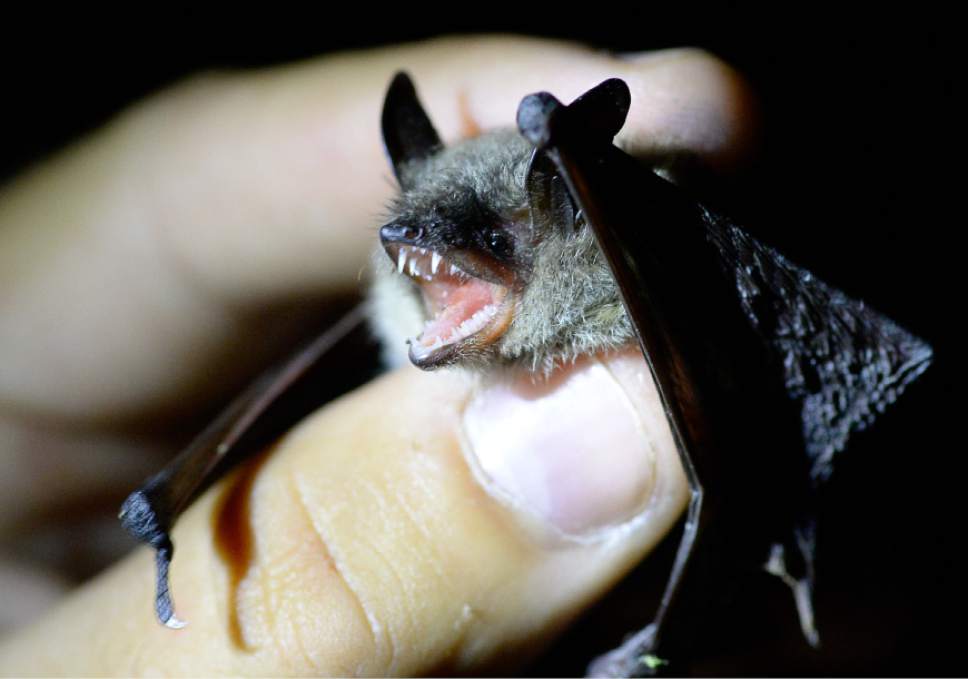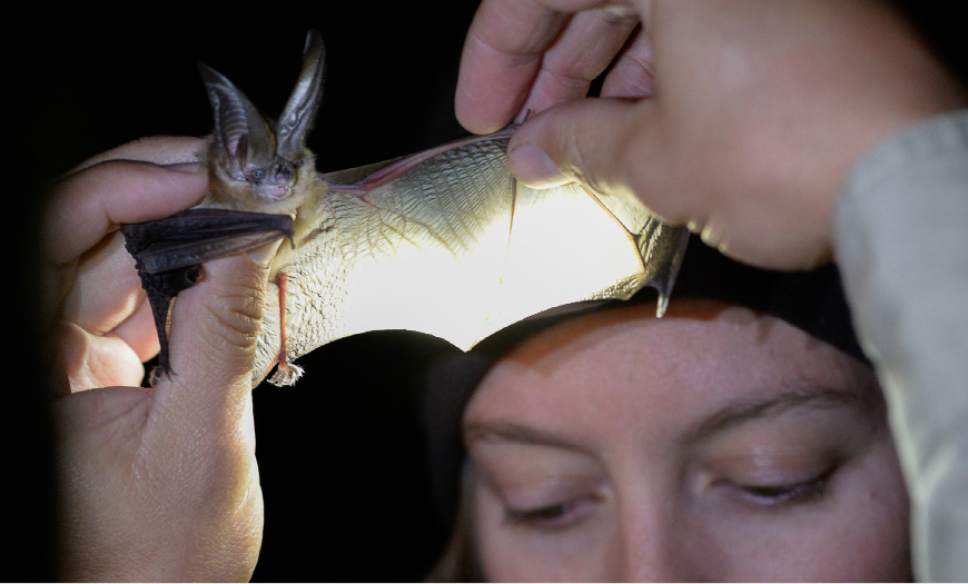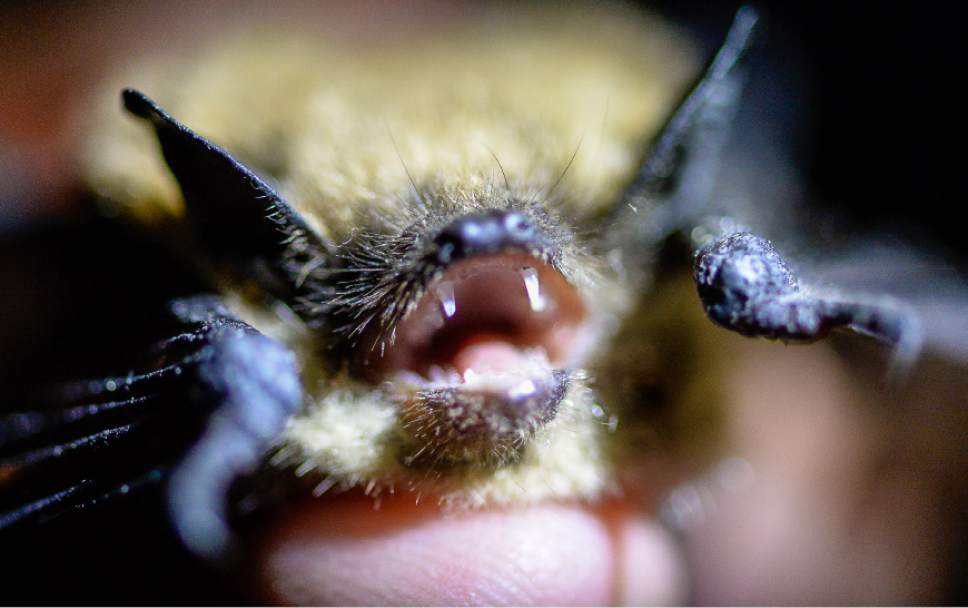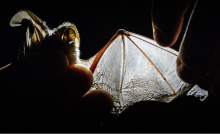This is an archived article that was published on sltrib.com in 2017, and information in the article may be outdated. It is provided only for personal research purposes and may not be reprinted.
Bats are among nature's most interesting creatures. They're also one of the more misunderstood.
The Division of Wildlife Resources is doing its best to educate Utahns on the value of state's 18 species of the flying mammal.
There is apparently plenty of interest.
Members of the public quickly gobbled up all 15 spots available for a Saturday event called Meet the Bats Night in the La Sal Mountains near Moab, one in an ongoing series of wildlife educational events offered by the DWR. The agency will next offer a chance to watch ospreys at Flaming Gorge on Saturday.
During the bat events, biologists catch the creatures using a fine mesh net over a pond during feeding times, then identify, measure and release the animals unharmed. Participants are able to see, photograph and learn about the interesting creatures.
"As the evening draws on, we'll likely catch bats of a variety of sizes and species," said the DWR's Morgan Jacobsen, the conservation outreach coordinator in southeastern Utah.
Utah's bats are not only interesting, they're valuable, according to DWR biologist Kimberly Hersey.
"All of Utah's bats are insect eaters," said Hersey. "They consume vast quantities of nocturnal agricultural pests, including moths. Throughout the United States, scientists estimate bats are worth more than $3.8 billion a year in reduced crop damage and pesticide use. And that, of course, means fewer pesticides enter the ecosystem. In other areas, bats are important pollinators and seed dispersers."
Movies and books have often portrayed bats as scary, dangerous creatures.
Because of their nocturnal and secretive nature, bats have been misunderstood, but there is little to fear, Hersey said.
Yes, bats can be infected with the rabies virus. And a bat that can be easily approached by humans is likely to be sick and may bite if handled. But if you do not try to touch or handle a bat or, for that matter, any other wild animal, there is little chance of being bitten.
None of Utah's bat species are federally threatened or endangered, though six are considered species of greatest conservation need. There is concern about a fungus disease called white-nose syndrome, which kills some species of bats in hibernation, but it has not yet been detected in Utah.
Hersey said bats can be seen in almost all parts of Utah, except for the Bonneville Salt Flats and the highest alpine areas. Bats can often be seen concentrated around water sources. —
Bats in Utah
Visit https://wildlife.utah.gov for more on bats and chances to meet other wildlife in the state.









